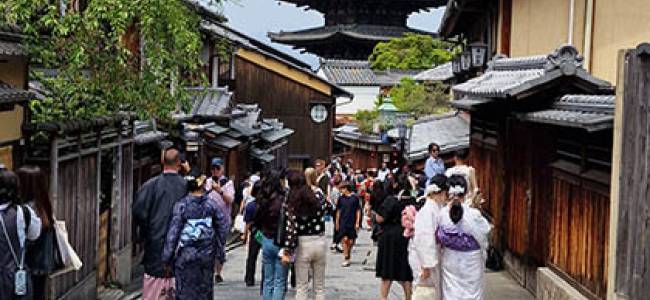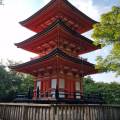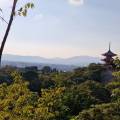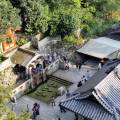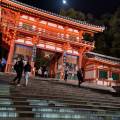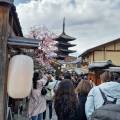Higashiyama Tour
Itinerary (Customizable):
Gion Kobu Geisha district
Yasaka Pagoda
Higashiyama District
Kiyomizu Dera Temple
Yasaka Shrine
Description:
In this tour, you will see some of the streets where the Geisha live and work before we go up to one of Japan’s most photographed spots, Yasaka Pagoda. From here, we are in the Higashiyama District filled with shops and cafes on each side on the way up to one of Kyoto’s must-see temples, Kiyomizu Dera with a stunning view of the whole Kyoto from the top. From here, we walk down to the heart of Gion, Yasaka Shrine.
We begin in Miyagawachō, one of Kyoto’s five geisha districts, known for its tea houses and its deep connection to Kabuki theater. From here, we continue into Gion Kobu, the most famous geisha district, where there’s a chance to spot one of the beautiful flowers (geisha) of the district.
Walking up from the geisha district, the five-storied Yasaka Pagoda suddenly rises before us. This is one of Kyoto’s most iconic views. Dating back to the 6th century, once part of a bigger temple named Hokanji, it has become a symbol of Higashiyama, perfectly framing the old streets around it.
Climbing into the Higashiyama district, we stroll through preserved merchant streets lined with craft shops, sweets stores, and souvenir shops. This area is Kyoto at its most picturesque, traditional wooden town houses waiting to be explored.
Our path up leads to Kiyomizu Dera, a UNESCO World Heritage site. Famous for its vast wooden stage leaning out over the hillside, the temple offers sweeping views of the city. It’s especially striking during spring and autumn, but of course a must-see all year round. The name “Kiyomizu” means “pure water”, and pilgrims have been coming here for centuries to drink from its sacred Otowa waterfall.
We finish at Yasaka Shrine, the guardian shrine of Gion. Known for its vibrant vermillion gates and lanterns, Yasaka is the heart of Kyoto’s Gion Matsuri which is one of Japan’s most famous festivals happening in the middle of July. It’s a lively yet spiritual place, a fitting ending to our journey through Kyoto’s living traditions.
-
Well-organized. Everything was great!
- 07-14 days
- Group - Corporate
- Educational
EVERYTHING! The tour guides were so insightful and pleasant to be with during our tours. They gave us great education on the history of the cities and made sure to give us great local recommendations on things to do and places to eat after the tours. The drivers and the boat captain were also incredibly friendly.Removed one destination from our itinerary and spent more time in each of the remaining destinations.9.2 / 100 2 -
Enjoyable and Memorable
- 03-07 days
- Family & Friend
- Adventure
Our trip was absolutely amazing and definitely ‘an experience of a lifetime’. From our very first contact with this travel company, through the entire planning and booking process, and each aspect of the actual trip, the level of organization and service and professionalism exceeded our expectations.In reviewing our trip, we feel that the itinerary and pace were really well thought out and executed, so there is very little we would change.8.2 / 100 1 -
PERFECT HONEYMOON for us
- 01-03 days
- Couples - Honeymooners
- Spa - Relax
Our tour guides were fantastic and made a big difference to our experience. It was a joy to use a flawless travel company. They arranged everything so we didn't have to worry about details.We were honestly so pleased with our trip that we don't think we would change anything.8.5 / 100 3
Price includes
- English or Norwegian speaking tour guide.
- Entrance fees as specified.
- VAT and service charge.
Price excludes
- All meals and beverage
- Travel and health insurance
- Personal expenses
- Public transportation cost between sightseeing spots
- Taxi (on your request)
- Optional visits (like special events) and other services unspecified on-route
Cancellation policy
- ~48 hours before tour: 100% refund
- ~24 hours before tour: 80% refund
- Same day as the tour until 1 hour before: 20% refund
- 1 hour ~ after tour: 0% refund
Powered by Solidres

+81 809 972 4480
melanie@kyotowhispers.com


